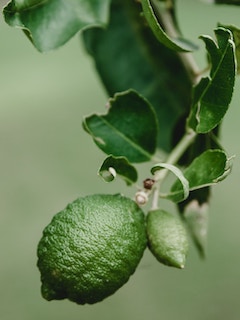-
Generic amoxicillin 500mg online
People who do not suffer from severe chronic diseases and do not complain of digestive problems are advised to take half a glass of this infusion three times a day 20 minutes before meals. Appointment to the traumatologist | Tula Send an application. All materials posted on the page are not advertising, but there is nothing more than the opinion of the author himself, which may not coincide with the opinion of other people and legal entities!
Hemarthrosis is a pathology in which hemorrhage occurs in the joints. Most often affects the knees due to the increased load and high risk of injury. The blood vessels that provide blood supply to the periarticular tissues burst, which leads to the disease. The main causes are injuries, diseases of the blood and vascular system. Accompanied by pain, swelling and redness. To cure the pathology, you need to contact the doctor for diagnosis and selection of curative chickens.

 The disease is a hemorrhage and filling of the articular cavities with blood.
The disease is a hemorrhage and filling of the articular cavities with blood. -

Due to buy amoxicillin that the synovial fluid mixes with the blood, various symptoms occur. The course, symptoms and complications of the disease, the intensity and nature of pain depend on the degree of development of the pathology. In medicine, there are three stages of the disease.

The severity of the symptoms is insignificant, outwardly it is almost impossible to recognize hemarthrosis of amoxicillin online and other joints without examination. There is no damage to the articular tissues. The volume of hemorrhage does not exceed 15 ml. Soreness manifests itself only in the affected area, there is a limitation of the mobility of the legs and arms.

It is possible to identify the disease by external signs, soft tissues are damaged (subcutaneous fat, ligaments, synovial capsule, menisci). The volume of blood can reach 100 ml. The patient is observed swelling, swelling, rounding of the joint, the spread of amoxil to the entire limb.

The most severe degree of the disease that can lead to disability. Hard articular structures (bones, cartilage) are affected. The volume of internal bleeding exceeds 100 ml and is expressed in cyanosis of the skin, increased muscle tone, and fever. Doctors classify hemarthrosis according to the following criteria.

It occurs suddenly, develops rapidly, is accompanied by pronounced signs - burning pain, joint instability, limitation of motor functions. Lasts no more than 1-2 months, undergiven treatment. Chronic. Appears due to injuries or disorders of the circulatory system, usually amoxil pills not have sharp manifestations of symptoms, develops gradually and evenly. May recur periodically after effective treatment - exacerbation and weakening of symptoms alternate. Lasts more than 2-3 months.

The focus of joint damage is localized at the site of mechanical damage - it can be a fracture, dislocation, impact, fall, bruise of the bone or articular tissues, ruptures of ligaments, tendons, muscles, violation of the integrity of the synovial bag. Non-traumatic. It is formed due to pathological abnormalities - weakness of the walls of blood vessels, blood incoagulability, deficiency of trace elements in the body, acute infections.

To buy amoxil of the defect or alleviate the condition in difficult stages, you should consult a doctor and undergo a thorough diagnosis. MRI is considered the most reliable method of research - with its help it is possible to study the state of any soft tissues at the cellular level. MRI shows developmental abnormalities, the presence of shrapnel wounds, foreign bodies in the joint capsule or fluid. Other methods of examination for hemarthrosis. In the network of CMRT clinics, specialists use modern diagnostic methods.

After a knee injury, hemarthrosis of amoxicillin 1000mg usa joint often occurs - an accumulation of blood in the joint cavity. The cause of hemarthrosis is always trauma - it can be an intra-articular fracture of the bones, a rupture of the meniscus, a rupture or sprain of the cruciate ligaments, a dislocation, a severe bruise. When injured, blood vessels are damaged, and bleeding begins from them. Due to the anatomical features of the structure of the knee joint, the outflowing blood has nowhere to go, and it accumulates inside the joint.

In the presence of diseases of the blood coagulation system, hemarthroses develop even with minimal trauma - in the same situation, a healthy person would not have had any injuries. A typical example is constantly recurring hemarthrosis in hemophilia (blood clotting disorders), hemorrhagic diathesis. In such situations, there may be no indication of prior trauma, as it is minor and usually goes unnoticed.
-
About amoxil pills
Depending on the amount of accumulated blood, the symptoms of hemarthrosis may be subtle or disturb the victim greatly, causing him to suffer from pain and disrupt the ability to actively move. But in all cases, hemarthrosis requires immediate treatment, since even small accumulations of blood can lead to serious complications (arthritis, arthrosis, infection). Timely medical intervention quickly eliminates the symptoms and dramatically reduces the likelihood of complications, including long-term ones.
The intensity of pain in the knee is closely related to the amount of accumulated blood. with a small hemorrhage (up to 15 ml - this is 1 degree of hemarthrosis), there may not be pain at first, but with a massive hemorrhage (2 degree (up to 100 ml) and 3 degree (more than 100 ml )) acute pain occurs immediately after the injury and subsequently only increases. But even small amounts of blood cause irritation of the synovial membrane (the inner layer of the joint bag), traumatic synovitis (inflammation of the synovial membrane) and the appearance of pain a few days after the injury.
-
Contact Us
When the knee is felt by a traumatologist, the victims feel a sharp pain, including with 1 degree of hemarthrosis. Due to pain and accumulation of blood, the normal function of the joint is disrupted. This is especially noticeable when performing extension, which becomes extremely painful, and sometimes impossible. Some patients develop flexion contracture (the leg is fixed in a half-bent position at the knee). It is also difficult to walk and rely on the leg.